Pachyphytum Varieties and Care Guide
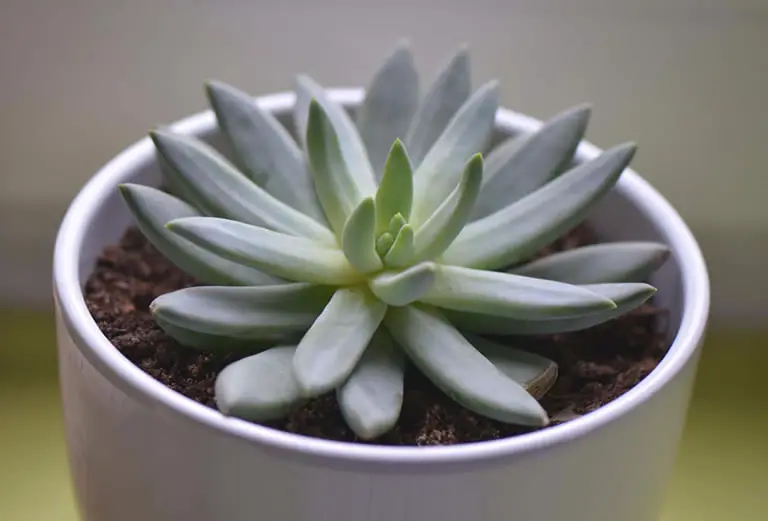
Pachyphytum is a small but captivating genus of succulents known for its jellybean-like leaves, soft pastel tones, and satisfyingly plump rosettes. Often compared to moonstones or sugar-coated candies, these chubby succulents are easy to care for and perfect for containers, windowsills, or sunny outdoor beds.
Native to Mexico’s rocky highlands, Pachyphytum is ideal for warm, dry climates and indoor growers who love light-filled spaces. Once you understand their light, water, and soil preferences, they’re almost effortless to maintain.
Table of Contents
Pachyphytum Care: How to Grow These Plump, Pastel Succulents Indoors and Out
Let’s explore how to grow and enjoy these playful succulents year-round.
What Makes Pachyphytum Unique
Pachyphytum, part of the Crassulaceae family, is native to central and northern Mexico, where it grows in well-drained volcanic soils and dry, rocky outcrops.
The name “Pachyphytum” literally means “thick plant,” referring to its round, swollen leaves that store water for long periods.
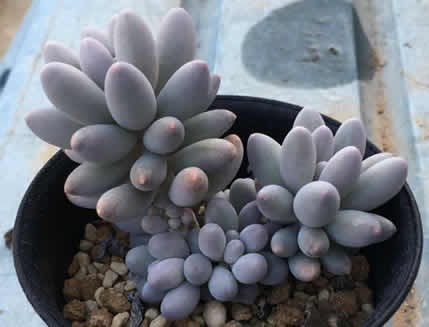
These succulents often have a powdery coating called farina, which protects them from intense sunlight.
Their growth is slow but steady, and they remain compact, making them perfect for indoor pots and tight spaces.
Most varieties form rosettes on short stems, and they bloom with small, bell-shaped flowers in shades of red, orange, or pink during late winter or spring.
Light Requirements: Plenty of Bright, Indirect Light
Pachyphytum thrives in bright, indirect sunlight and can handle some gentle direct sun, especially in the morning.
A south- or east-facing window is ideal indoors.
Too little light causes the leaves to stretch and lose their plump, rounded form.
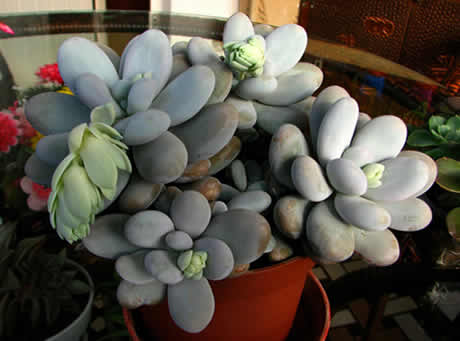
Too much harsh sun can scorch the foliage or bleach the pastel color.
If grown outdoors, give them filtered light or partial shade, especially in hot climates.
Watering: Soak and Dry Is Key
Pachyphytum prefers a deep soak followed by a dry spell.
Water thoroughly when the soil is completely dry, letting excess water drain from the pot.
Then, wait until the soil is bone-dry before watering again.
In summer, this usually means watering every 10–14 days.
In winter, watering can be reduced to once every 3–4 weeks.
Avoid splashing water directly on the leaves, as it can damage the protective farina and lead to rot.
Soil and Potting: Fast Drainage is a Must
These succulents need well-draining soil to prevent soggy roots.
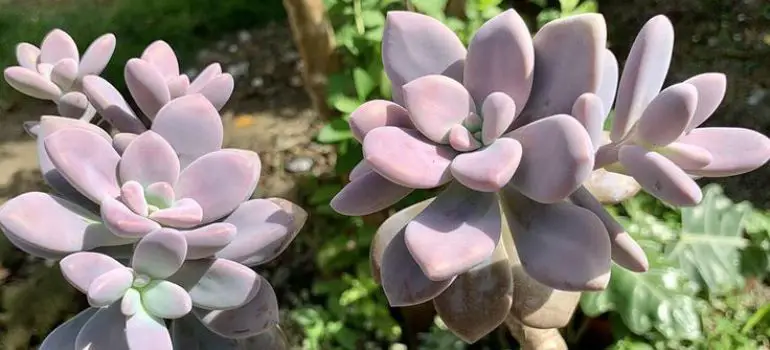
Use a cactus or succulent mix, or make your own blend:
-
2 parts potting soil
-
1 part coarse sand
-
1 part pumice or perlite
Choose a pot with drainage holes, and consider terracotta or unglazed clay to help wick away excess moisture.
Repot every 2–3 years in spring to refresh the soil and give room for new growth.
Fertilizer: Gentle Feeding During Active Growth
Feed Pachyphytum during spring and summer with a diluted succulent fertilizer once a month.
Look for a balanced blend with an NPK around 10-10-10 like this one or a low-nitrogen formula like 5-10-10 like this one to avoid excessive top growth.
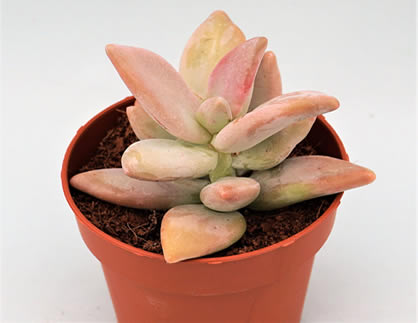
Avoid fertilizing during winter dormancy, as the plant isn’t actively growing.
Organic options like diluted fish emulsion or compost tea can also be used sparingly for slow, gentle feeding.
Pruning and Maintenance: Keep It Tidy
Pachyphytum needs very little pruning.
Remove any dried, shriveled leaves from the base of the plant using clean fingers or tweezers.
If a rosette becomes stretched or leggy, you can behead it and propagate the healthy top (more on that in the propagation guide).
Keep the plant dust-free with a soft brush or gentle air blower to preserve its powdery coating.
Best Spot in the Home
These succulents are perfect for sunny windowsills, bright offices, and kitchen shelves that get lots of light.
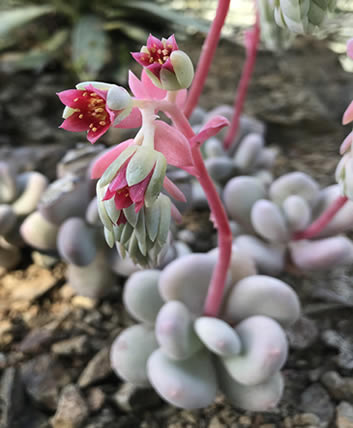
Their pastel coloring and compact size make them ideal for small decorative pots, mini arrangements, or tabletop displays.
Just be sure to keep them out of reach of curious pets or little hands, as the leaves can bruise easily.
Outdoor Pachyphytum Care
In USDA zones 9–11, Pachyphytum can be grown outdoors year-round.
Place them in well-drained soil in raised beds, rock gardens, or containers.
Give them morning sun and light afternoon shade to protect their color and prevent sunburn.
If rain is frequent, grow them in pots and move them under shelter during wet periods.
Always bring the plant indoors if temperatures drop below 40°F (4°C), as Pachyphytum is not frost-tolerant.
Popular Pachyphytum Varieties
Here are the most popular and visually striking types of Pachyphytum, many of which are prized by collectors:
Pachyphytum oviferum (‘Moonstones’) – One of the most iconic types, with rounded, silvery-pink or blue leaves that resemble smooth pebbles.
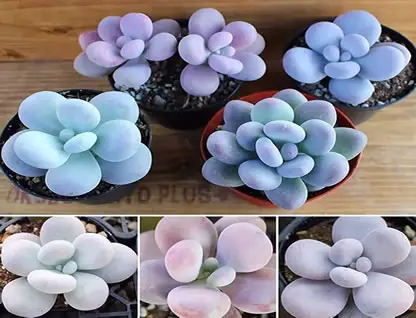
Pachyphytum compactum (‘Little Jewel’) – Compact rosettes with chiseled, angular leaves and a silvery green color.
Pachyphytum hookeri – Pale blue-green leaves with a glaucous coating and tight, symmetrical rosettes.
Pachyphytum bracteosum – A branching species with longer, spoon-shaped leaves and soft green coloring.
Pachyphytum glurinicaule – Rare and more elongated, with greenish-gray leaves that develop pink tones in sun.
Pachyphytum machucae – Rounded leaves with a powdery blue hue; extremely slow growing but very ornamental.
Pachyphytum rzedowskii – Distinctive narrow-leaved variety with a more upright form and rare in cultivation.
Pachyphytum ‘Blue Haze’ – Silvery blue leaves with a lavender undertone and an ultra-matte finish.
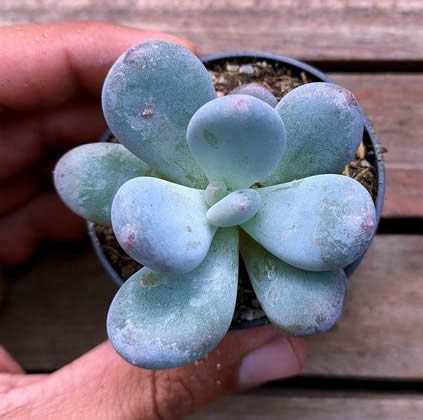
Pachyphytum wedermannii – Compact and easy to grow, with fat, oval leaves that can turn pinkish at the tips.
Pachyphytum oviferum ‘Pink’ – A pastel-pink version of Moonstones; very popular for romantic succulent arrangements.
Pachyphytum amethystinum – Beautiful lavender-tinted leaves with plump, rounded growth; stunning in sunlight.
Many of these varieties are available online and at succulent specialty shops.
Most can be propagated easily by stem cuttings or leaf pullings.
Common Problems and Fixes
Soft, mushy leaves
Caused by overwatering or poor drainage. Let soil dry out completely and repot in fresh, dry mix if needed.
Shriveled or wrinkled leaves
Usually a sign of underwatering. Water deeply and consistently when soil is fully dry.
Leaf drop
Can happen if the plant is moved suddenly, receives too little light, or is overwatered.
Sunburn or bleached leaves
Caused by too much direct sun. Move to a location with filtered light.
Pests (mealybugs or aphids)
Rare, but wipe off with a cotton swab dipped in alcohol or spray with neem oil if needed.
Final Thoughts
Pachyphytum is a lovable, low-maintenance succulent with a look that’s both cute and sophisticated.
With bright light, minimal watering, and good drainage, this genus will thrive indoors or outdoors and reward you with plump, pastel-colored leaves that look almost good enough to eat.
From the silvery perfection of Pachyphytum oviferum to the rosy tones of amethystinum, there’s a moonstone for everyone.
Thanks for reading! I'm Michael — houseplant fanatic and your Pinterest plant guide.
Follow me on Pinterest for fresh updates 🌿



